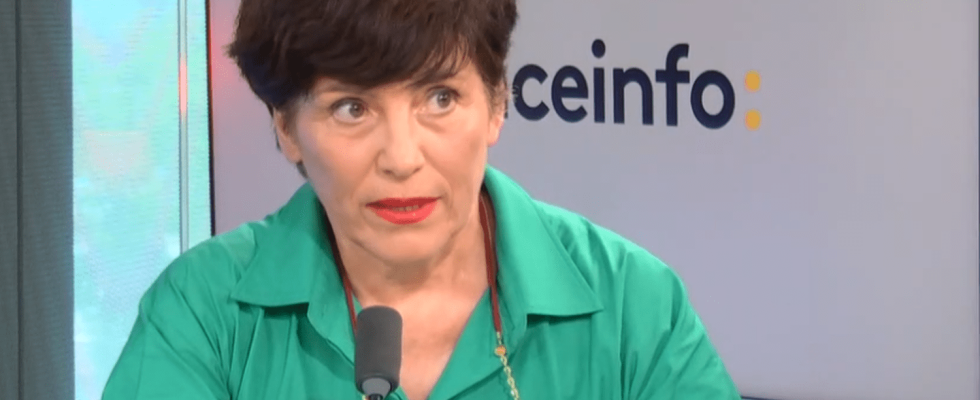The Prime Minister presented the objectives of ecological planning. The ecological transition concerns all sectors, for Sodexo, the leader in collective catering, its sector must turn towards sustainable, more plant-based food and reduce waste.
Reducing our greenhouse gas emissions by half by 2030 is the aim of the ecological planning presented Monday September 18 by the Prime Minister, Elisabeth Borne, to the different political parties before an official presentation by the president of the Republic, Emmanuel Macron the following Monday. Quantified objectives have been put in place by the government. All sectors are involved. Anna Notarianni, general secretary and impact director of the Sodexo Group, leader in collective catering in France, explains their strategy to reduce their carbon footprint.
franceinfo: The Borne government is therefore setting itself a target of reducing CO2 emissions by some 13 million tonnes for the agricultural sector by 2030. This is enormous and it assumes that the French seriously reduce their meat consumption. Is it true that we eat more meat in France than elsewhere?
Anna Notarianni : I think we need to promote sustainable food. This means bringing more plants into the diet and it does not mean eliminating meat at all, because meat is a good protein which is useful. But that means limiting excesses. This is one of the IPCC recommendations. And the Sodexo group began its food transition in 2017 by first working on sustainable products, by working with its suppliers. Sodexo has made commitments by 2025 to reduce our greenhouse gases by -35%. And last year, we were at -28%.
How do we ensure that in the canteen we choose plant-based food rather than animal food? Soy steak is not always very appetizing.
You just said the magic word. It’s not always “appetizing”. It must always become very appetizing and very tasty. How do we do it? It’s very simple, we train the chef in plant-based gastronomy. This is true culinary expertise. It is through pleasure that we can make food vegan. And so I’m going to give you four examples of so-called low-carbon menus. For example, chicken colombo with sweet potato. In commercial catering, we make a beef carpaccio with small tangy vegetables, an eggplant confit with feta. And for those with a sweet tooth, we have chocolate and lentil cakes. It is through the diversity of food that we replace an offer which has been particularly well worked, cooked and presented to consumers. When our chefs return from training at the Lenôtre school on plant-based cooking, we see a 30% increase in the consumption of these dishes.
We see that the importation of meat has increased, particularly in collective catering, by more than 10%. This is still contradictory with better quality food, closer to home. Is it because it costs less?
The price component exists. What we must do is fight together against waste. It is not normal to have so much waste throughout the food chain in the world. That’s 35% food waste. And so yes, we must consume better meat and therefore we must not consume more meat if it is not better meat. And really, that’s Sodexo’s credo.
But in the meantime, if the importation of meat is increasing in collective catering, it is because the customers are also asking you to pay attention to prices. We have food inflation of more than 11%.
At Sodexo, we almost exclusively consume meat of French origin. So it’s long-term work with customers and suppliers. And so yes, of course, we must all take the measure that the fight against food waste is one of the solutions to controlling costs. But once again, I repeat, we must take a renewed interest in cooking, in the diversification of foods. This is the solution. And it is through taste and culinary pleasure that we broaden and change behavior. The food transition has been going on for years, so we need to organize this cooperation, local sectors and invest in training and consumer education.
Watch the interview in full and on video:
